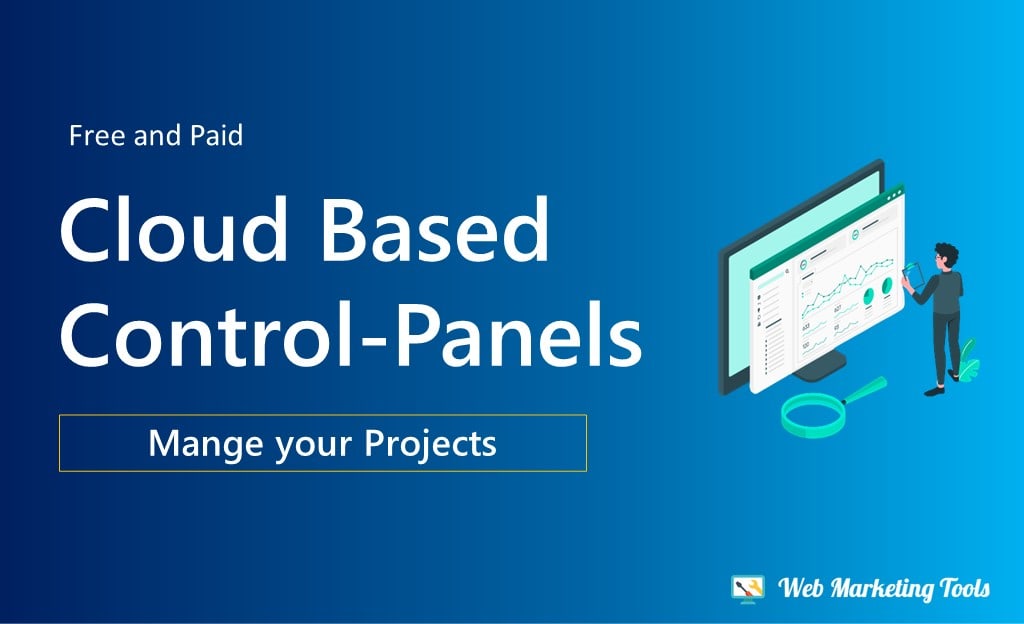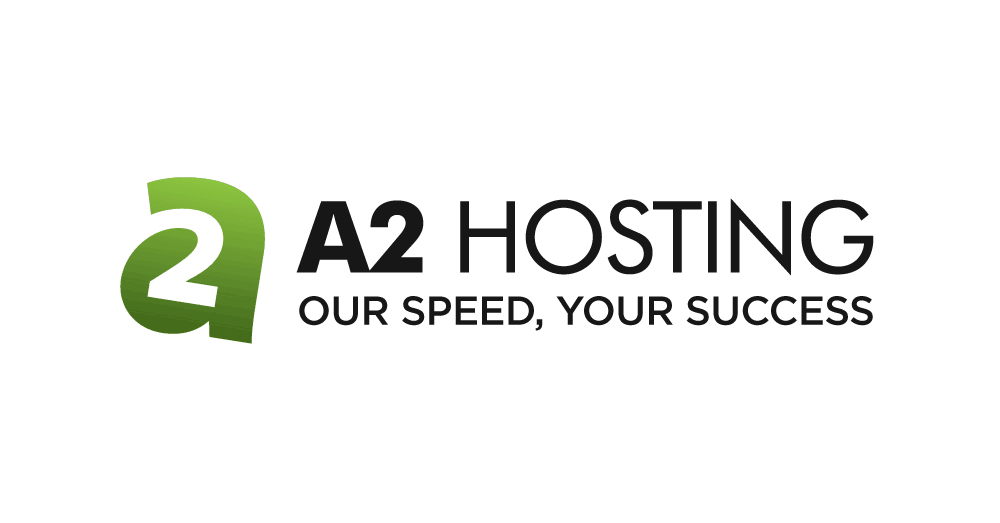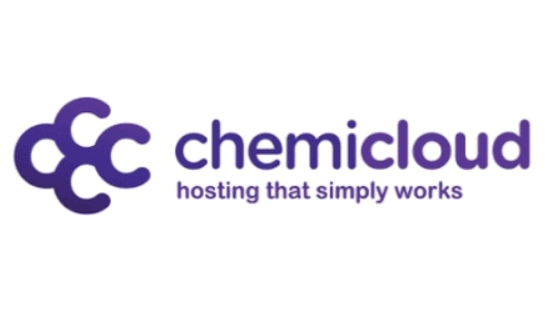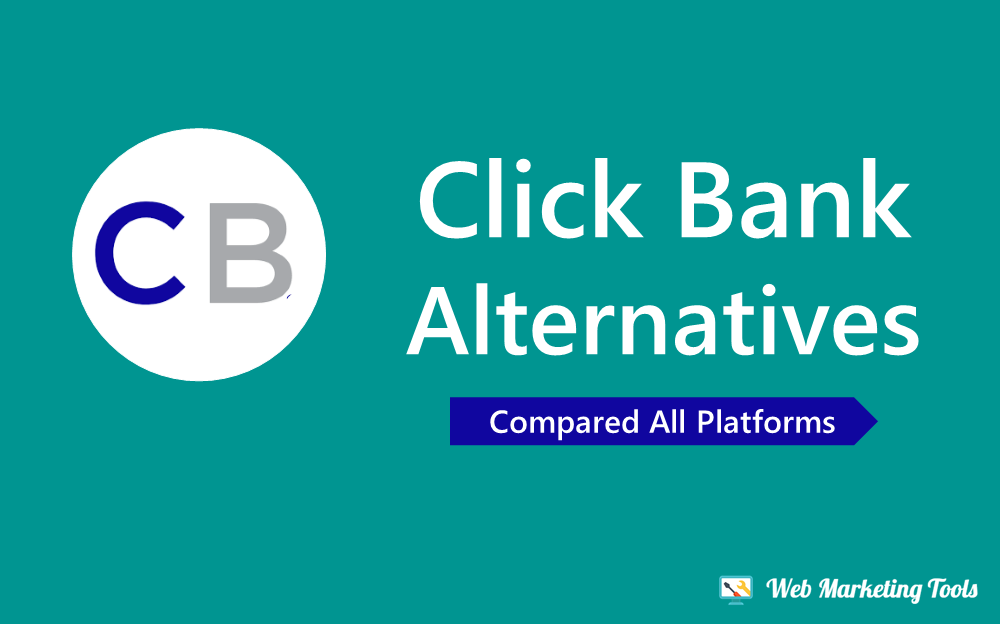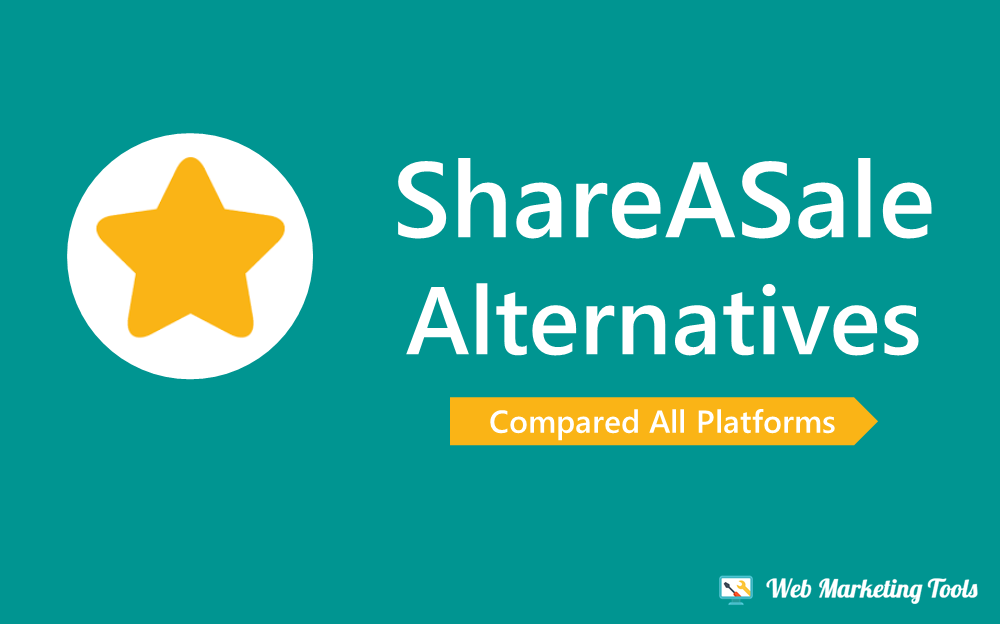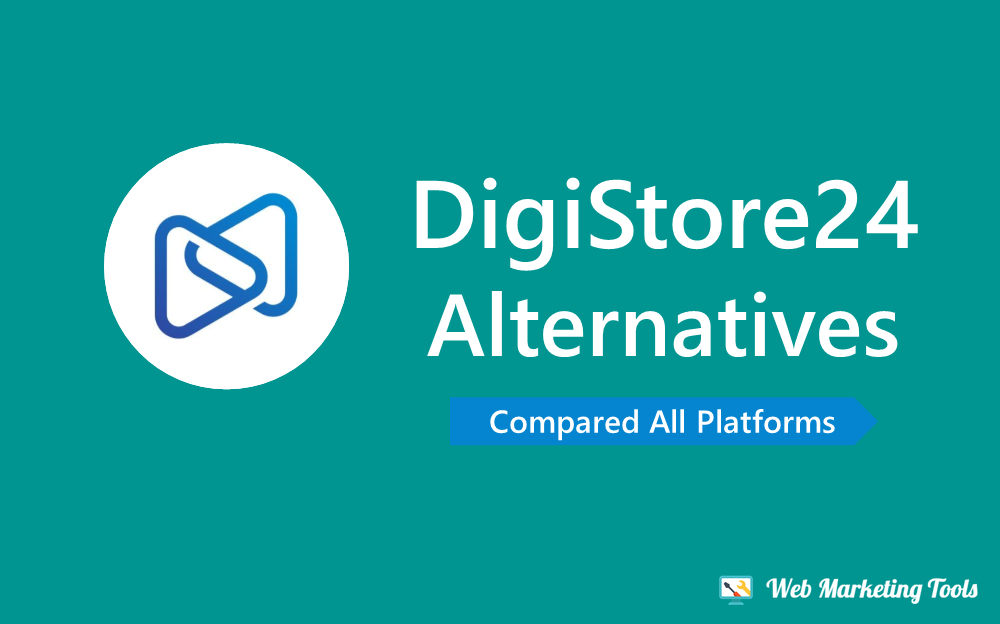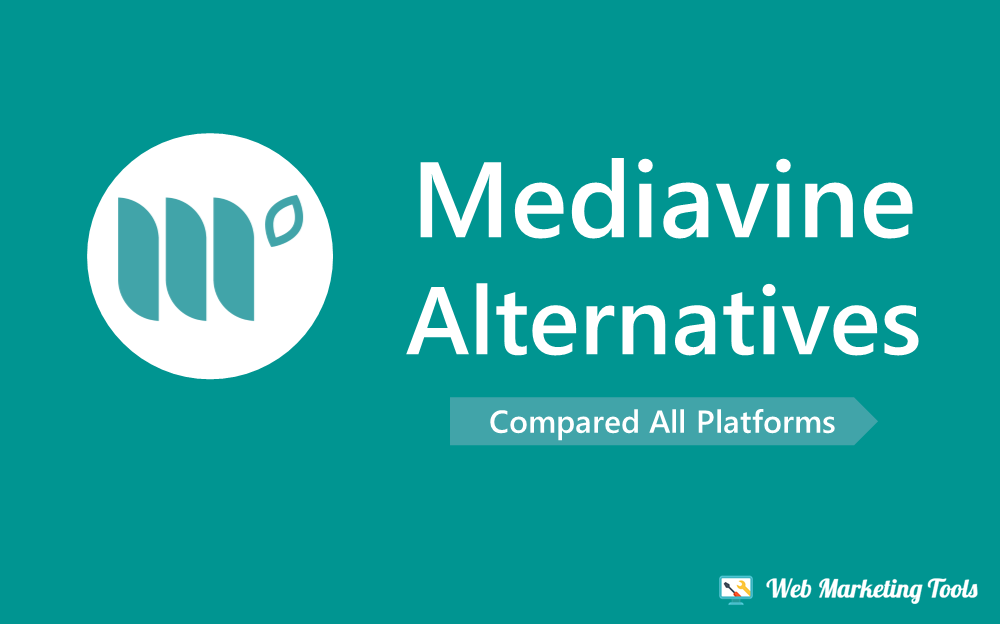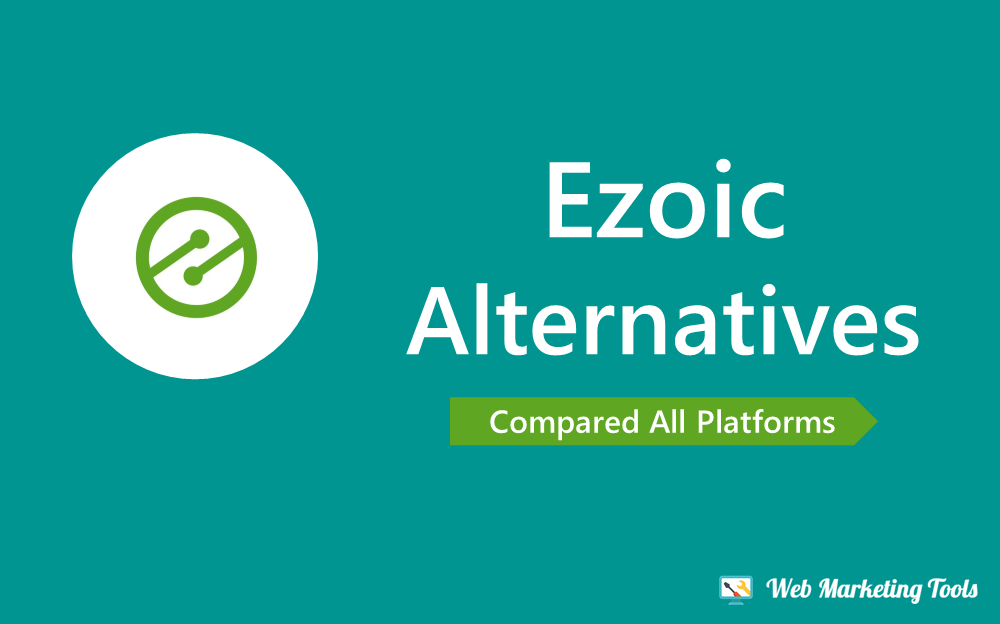Get the Best Cloud Control Panel in 2025, here we have mentioned all the major details of a Cloud server Control panel.
If you are looking for Right Cloud Control Panel for your generalizing control interface?
Then your search is over now!!
You just bought a brand-new cloud server from your chosen cloud infrastructure supplier. Now begins the difficult task: setting up programs and services, handling security-related issues, creating backups, etc.
You must pick a Cloud-Based Management Panel that allows you to build, administer, and manage servers without getting too technical.
Luckily, you have a wide range of fantastic options to choose from. Thanks to their management panels and tools, the most popular cloud providers allow you to run a cloud-based infrastructure from the convenience of your sofa.
| Control Panel Type | Web Hosting Management Panels |
| Listing Based on | Free & Paid Both |
| Trial Account | Yes Provides a Free Trial |
| Money Back Guarantee | Up to 60 Days |
Let's Start!!
An Introduction to Cloud Control Panels
Any provider of cloud services has a “Control Panel” as its external appearance. This is what enables the “as a service” provision of cloud-based applications, including infrastructure as a service and software as a service.
Control Panels provide APIs for each of these “Control Actions.” In addition to the APIs, they frequently include GUIs or graphical user interfaces.
Because they provide a 360-degree picture of all control operations taking place within the apps, they are often referred to as “A Single Control Pane.”
Visit – DigitalOcean Coupon Code, Get FREE $200 Credit to Start Trial
What Functions May a Control Panel Perform?
1. User Interface
- Display Information: Control panels serve as user interfaces that present real-time data, alerts, and system status, making it easy for users to understand the operation of machinery or systems.
- Input Controls: They provide buttons, knobs, or touch screens that allow users to input commands and adjust settings.
2. Monitoring
- Real-Time Monitoring: Control panels enable the monitoring of system performance, tracking parameters like temperature, pressure, or speed.
- Alarm and Notification: They can issue alerts for anomalies or operational issues, helping users respond swiftly to potential problems.
3. Control Operations
- Start/Stop Controls: They allow users to start, stop, or pause operations of equipment or machinery remotely.
- Adjust Settings: Users can modify operational parameters, such as speed, flow rates, or temperature, directly from the control panel.
4. Data Logging
- Record Keeping: Control panels can log data over time, allowing for historical analysis and trend identification. This is critical for evaluating performance and maintenance needs.
- Reporting: Many control panels can generate reports summarizing operational data, making it easier to assess performance and compliance.
5. Integration with Other Systems
- System Interfacing: Control panels can be integrated with other systems, like SCADA (Supervisory Control and Data Acquisition) or PLC (Programmable Logic Controller), to enhance functionality and data exchange.
- Communication: They may facilitate communication between multiple devices or control systems, ensuring coordinated operations.
6. Configuration and Calibration
- System Setup: Control panels can assist in the initial configuration of machinery or systems to meet specific operational requirements.
- Calibration: They often include functions for recalibrating sensors or equipment to maintain accuracy.
7. Security Measures
- Access Control: Control panels may incorporate security features such as password protection or user authentication to prevent unauthorized access.
- Audit Trails: They can maintain logs of user actions and changes made to settings, ensuring accountability and traceability.
8. User Customization
- Personal Preferences: Control panels may allow users to customize settings and layouts, tailoring their experience to suit specific operational needs.
- Multiple User Profiles: Some systems support multiple profiles, enabling different users to have personalized controls and settings.
9. Troubleshooting Assistance
- Diagnostic Tools: Many control panels offer diagnostic functionalities to help users identify issues within the system or machinery.
- Guided Procedures: Some may include step-by-step troubleshooting guides or help features to support users in resolving problems.
10. Remote Access
- Remote Monitoring and Control: Advanced control panels enable remote access, allowing users to monitor and control systems from different locations using the internet or dedicated networks.
Checkout All The Major Info.
Choose the best one-
Best Cloud Hosting Control Panel 2025
Here’s a table comparing some popular Cloud control panels:
| Control Panel | Description | Features |
|---|---|---|
| CyberPanel | Open-source control panel designed for LiteSpeed web server | One-click WordPress installation, DNS management, email management, website staging, Git integration, security enhancements |
| cPanel | Industry-standard control panel for web hosting management | Server monitoring, deployment, and scaling, SSL certificate management, database management, Git integration |
| Plesk | Comprehensive control panel for web hosting and server management | Website and domain management, email accounts, database management, security measures, WordPress toolkit, Git integration |
| CloudPages | Cloud-based control panel for managing web applications | Scalable infrastructure, load balancing, automated backups, SSL certificate management, application deployment |
| RunCloud | Control panel for managing servers and applications in the cloud | Server monitoring, deployment and scaling, SSL certificate management, database management, Git integration |
| Vesta | Open-source control panel with a lightweight and simple interface | Domain and website management, email accounts, database management, DNS management, security measures |
| Moss | Control panel designed for managing cloud infrastructure | Infrastructure management, load balancing, auto-scaling, DNS management, server monitoring, security measures |
Here we have shared a detailed view of each of the platforms:
CyberPanel
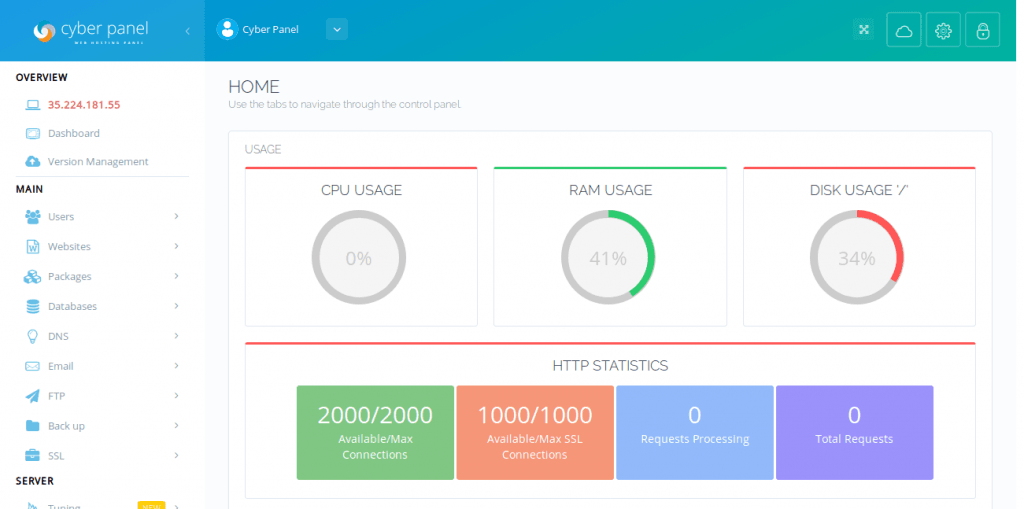
CyberPanel is the name of an improved OpenLiteSpeed web server control panel. New domains and virtual hosts may easily manage SSL with CyberPanel.
The cache module is by default activated, enabling users to use it to cache their pages.
In addition, CyberPanel offers a one-click install for WordPress and Joomla. When the WordPress installation turns on the LiteSpeed Cache plugin, you are now ready to go.
CyberPanel includes OpenLiteSpeed and LiteSpeed Enterprise, two control panels that were designed with speed in mind, in contrast to other control panels that come with Apache or NGINX.
CyberPanel Features:
- Single-click SSL
- Simple SSL Mod Security
- Single Click LiteSpeed Cache and WordPress Installation
- Power DNS
- DNS Power FTP Server
- PHPMyAdmin
- Different User Levels
- Managed Files
- Firewall
- The Git Manager Firewall
- 1 click Backup and restoration
- CSF
- MailScanner
- Stage Your Website
- Server for email (Rainloop)
cPanel
To make administering servers and websites easier, a control panel called cPanel, an online graphical user interface (GUI), is employed.
With cPanel, you may publish websites, administer domains, organize web files, set up email accounts, and do other things.
cPanel is one of the most popular control panels in the US. Customers of several web hosting companies receive cPanel as part of their subscription to hosting.
The Web Host Manager server administration interface and the cPanel user interface are the two interfaces in cPanel (WHM).
Users may manage their websites thanks to this combination, which also provides hosting firms with the tools they need to manage the server.
cPanel Pricing Plans:
- Solo (1 Account) – $15.99/month
- Admin (5 Accounts) – $24.99/month
- Pro (30 Accounts) – $35.99/month
- Premier (100 Accounts) – $53.99/month
cPanel Features:
- File management.
- Features for simple email.
- Control a reliable database.
- built-in integration with third parties.
- Easy to Install
- Domain management.
- dependability as well as portability
If you want to start web hosting and still searching for the right one, then you can choose these budget-friendly hosting options which are shared below.
Checkout the Ultimate Webhosting Platforms:
Plesk
Plesk provides a powerful and best server control panel to make administering your apps and websites easier.
It provides an easy-to-use interface with all the features required to complete even the trickier website maintenance tasks.
Furthermore, a built-in code editor allows for instant file change.
Along with Plesk, Vultr offers a user-friendly control panel that makes it simple to swiftly deploy new instances, choose the server OS from a choice of Linux distributions, specify the server’s location, and perform other tasks.
Plesk Pricing Plans:
- Web Admin ($9.90/mo) – 10 Domains, WP Toolkit SE
- Web Pro ($15.26/mo) – 30 Domains, WP Toolkit, Subscription Management
- Web Host ($25.16/mo) – Unlimited Domains, Reseller Management
- Partners (custom) – 10 Domains, WP Toolkit SE
Plesk Features:
- Toolkit SE for WordPress
- Management of subscriptions.
- CMS Assistance
- File Management.
- Hosting of email.
- Database Support.
- Integration of a control panel.
- Integration of e-commerce.
- Tools for security
CloudPages
An easy-to-use but effective control interface is used by the software-as-a-service platform CloudPages to manage cloud servers.
CloudPages is a SaaS-based website management system. You may administer any PHP-based website using CloudPages, despite the fact that it is primarily designed for WordPress-based websites.
Simple enough to use for someone without technical knowledge. Using this cloud hosting panel, you can easily install and maintain your web applications.
CloudPages Features:
- WordPress Manager
- Bubblewrap.
- reCaptcha.
- Mod Security
- Firewall.
- Git Manager
- A number of PHPs.
- Staging with one click.
- One-click SSL is free.
- File Manager.
- Manage PHP.
- Team Management.
- server load is reported
RunCloud
Organizations can manage websites and apps built with the PHP frameworks Laravel, Code Ignitor, WordPress, and other frameworks with the use of a web-based server management solution called RunCloud.

Among the features are atomic deployment, activity logging, site login, password management, and IP whitelisting.
SSH configuration, name or provider addition, server relocation, and IP address configuration are all tasks that network engineers can perform.
Using RunCloud‘s integrated file management module, employees may add, delete, rename, and modify a file or folder permissions.
RunCloud Features:
- Atomic deployment of Git.
- Check the server’s health.
- WordPress Installation.
- staging for WordPress sites.
- server load is reported.
- several PHP.
- Backups.
- single-click SSL
- Manage files.
- Cron tasks.
- Version CLI.
Vesta
Vesta offers a simple, lightweight control interface that puts performance ahead of more complicated capabilities like multi-server configurations.
With its Nginx-based web panel interface, users, websites, DNS, mail accounts/servers, databases, cron tasks, backups, IP addresses, and other things can all be simply controlled.
To help you track the effectiveness of your website, detailed graphs and statistics are also shown in the panel.
Bash is the recommended native programming language for Linux server managers, and the Vesta core is open-source and includes bash.
The console’s command list now has 381 commands. Because of bash and GPL, Vesta can create new features and fix problems quickly.
Vesta Features:
- Computerized High Performance (HPC).
- Firewall.
- DNS assistance
- support for web servers
- Email assistance.
- FTP
- Database, and traffic management
Moss
Moss is more than just an admin tool or cloud server panel; it is a virtual friend for web development pros. Its goal is to help in whatever way it can managing the server and website and collaborating with the software development team.
Moss takes care of managing your servers and web-based programs so you can concentrate on developing new ones and managing your business.
It will be there to assist you when it’s time to set up, manage, or keep a check on your servers and websites.
Moss Features:
- Visibility right away
- Consider security when designing
- integration of a third party
- Deploys with no interruptions
- Notifications and monitoring with no configuration
- Team assistance
Key Factors-
Choosing the Perfect Cloud Hosting Control Panel
Choosing the right cloud hosting control panel is an important decision that can impact the performance, security, and ease of management of your cloud hosting environment.
Here are some factors to consider when choosing a cloud hosting control panel:
1. Features:
Evaluate the features offered by different cloud hosting control panels and compare them to your specific hosting requirements.
Common features to look for include server management, database management, domain management, email management, file management, security features, and scalability options.
2. User interface (UI):
The user interface of the control panel should be intuitive and easy to use, as it will be the primary tool you use to manage your cloud hosting environment.
Look for a control panel with a clean and organized interface that provides easy navigation and access to important features.
3. Scalability:
Consider the scalability options offered by the control panel. It should allow you to easily scale your hosting resources up or down based on your needs, such as adding more CPU, RAM, or storage to your virtual machines.
4. Security:
Security is a critical aspect of hosting, so make sure the control panel offers robust security features.
Look for features such as SSL certificate management, firewall configuration, backup and restore options, and user access controls to help secure your hosting environment.
5. Integration:
Consider how well the control panel integrates with other tools and services you use, such as content management systems (CMS), databases, email servers, and other third-party applications.
Seamless integration can make it easier to manage your cloud hosting environment and streamline your workflow.
6. Support:
Check the support options provided by the control panel, such as documentation, community forums, and customer support.
Good support resources can be invaluable in case you encounter issues or have questions about using the control panel.
7. Pricing:
Consider the pricing model of the cloud hosting control panel and ensure it fits within your budget. Some control panels may offer free plans with limited features, while others may have tiered pricing plans based on the number of resources or users.
8. Reputation:
Research the reputation of the cloud hosting control panel and the company behind it. Look for reviews, testimonials, and customer feedback to get an idea of the reliability and performance of the control panel.
9. Flexibility:
Consider the flexibility of the control panel to work with different cloud hosting providers and platforms. Some control panels may be designed specifically for certain cloud hosting providers, while others may be more platform-agnostic and work with multiple providers.
10. Future scalability:
Consider the future scalability of the control panel. Will it be able to meet your growing hosting needs as your website or application expands? Look for a control panel that offers room for growth and can accommodate your future requirements.
By carefully evaluating these factors, you can choose the right cloud hosting control panel that best fits your needs and helps you effectively manage your cloud hosting environment.
Our Opinion-
Conclusion – Cloud-Based Control Panel
Here we have shared all the important details about the cloud management control panel or cloud services control panel, we have created the best options for you can choose the right one according to your needs.
A solid control panel could make your team member’s time more efficient and productive, even if they are an expert in operating servers and websites.
You can also start your website on an expired domain name, which also has some benefits.
Consider all the savings you’ll experience, including those in terms of time and money, and those associated with fewer troubles and larger websites, while assessing the cost of such a product.
It is a valuable solution that simplifies the administrative aspects of running a blog, enabling bloggers to devote more time and energy to delivering quality content and engaging with their readers.
At the end of the post, we hope that this article was truly helpful to you. we just want to say that we mentioned all the possible details that are relevant to the Cloud-based control panels.
Frequently Asked Questions
What are Cloud Server Control Panels?
To manage your cloud server-hosted application, users need a control panel. That comes with many different features to easily operate that application.
Why do I need a control panel?
To make management easy, and get more features and specifications, users need a control panel.
Which is better Plesk or cPanel?
Both control panels have good features but cPanel has some better UX and features. While Plesk also offers a free control panel for up to 3 sites.
How to install a control panel?
Right now most of the cloud servers like Linode, Vultr, or DigitalOcean provide all these applications in the marketplace. It is just one clicked installation for any app. Although users can also install using the console.
Can I switch cloud control panels after setting up my hosting environment?
Switching cloud control panels after setting up your hosting environment can be complex and may require additional configuration and migration efforts. It’s recommended to choose the right control panel initially to avoid the need for switching later.
Are there free cloud control panels available?
Yes, there are free cloud control panels available, such as Webmin, Virtualmin, and VestaCP, which offer basic control panel functionalities without any licensing costs. However, free control panels may have limitations in terms of features, scalability, support, and security, compared to paid control panels.
Is technical expertise required to use a cloud control panel?
While most cloud control panels are designed to be user-friendly and intuitive, some technical knowledge may be required to effectively use and configure certain features.

